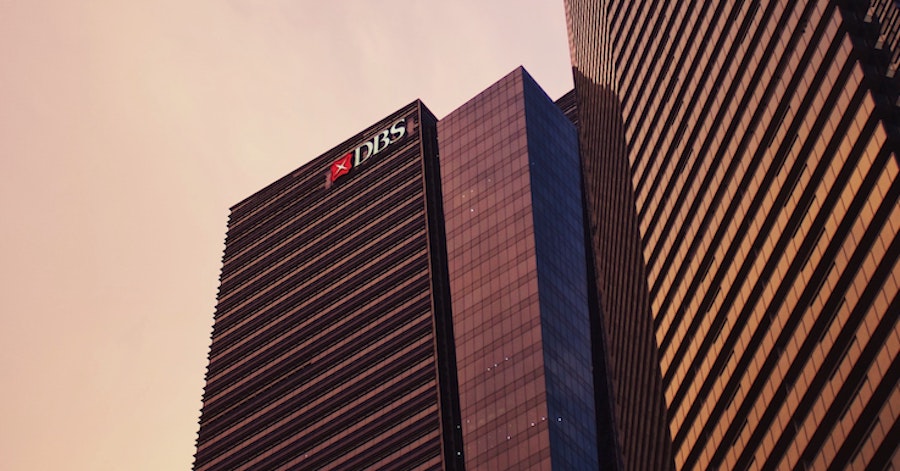All vaxxed up but nowhere to go? Think again. In light of recent news surrounding the potential reopening of our borders, we’ve been busy updating our travel bucket list. Here are 3 alternative travel destinations in Asia that you might wish to visit soon!
When the International Air Transport Association (IATA) released their World Air Transport Statistics (WATS) earlier this month, we braced ourselves for abysmal figures. With a whopping 60.2% decrease in passengers internationally compared to the year before, 2020 was the worst year ever for travel — let alone the airline industry.
The silver lining, however, came from domestic travel. Interestingly enough, the top five domestic airport pairs were all in Asia, featuring some of our favourite routes. There was Seoul-Jeju, Hanoi-Ho Chi Minh City, and of course a combination of popular Chinese cities like Shanghai, Beijing, Guangzhou, and Shenzhen.
These data points don’t come as a surprise, though. Domestic tourism has been cited for its growth potential, with many countries beefing up their tourism efforts through financial incentives and promotions. But what does that mean for us Singaporean explorers?
While we might not have domestic travel, our backyard is literally filled with unique and breathtaking sights. So instead of hopping on the first flight to the other end of the world, why not hang back a little and explore what our neighbours have in store? To help you out, we’ve pulled together a shortlist of underrated cities you can access via domestic flights based on the top Asian destinations as told by IATA.
1. Korea: Swap Jeju Island for Jeolla
For first-time visitors to South Korea, it’s pretty much a given that you’ll head straight to Seoul to explore its iconic sights, eat your weight in tteokbokki, and purchase Innisfree sheet masks by the dozen. If time permits, you might be able to take a short trip down to Jeju Island or even Busan. But if you consider yourself a seasoned traveller and would like to explore Korea in its most unadulterated form, then Jeolla is the place to be!
Located in the deep south of South Korea, Jeolla is split into two provinces, namely Jeollabuk-do in the North and Jeollanam-do in the South — both very similar yet vastly different at the same time. And despite being one of the more underdeveloped regions in Korea, Jeolla makes up for it with its lush greenery, rolling hills, and crazy delicious food. While we could go on for hours about the farming region’s famed fresh produce and fermented foods (fun fact: they have an annual fermented foods festival), we gotta first address its wondrous naturescapes. Case in point — the gorgeous Boseong Green Tea Fields in Jeollanam-do.
Image credits: Lindagoeseast
Now imagine this: It’s a balmy day, and you’re seated amongst the rows of lush green tea fields enjoying a freshly-brewed cup and the delightful view of mountain ranges and cedar trees enveloped in wisps of clouds. That’s the Boseong Green Tea Fields experience for you!
More than dazzling lights and bustling streets, Korea has a lot to offer in terms of nature (Juknokwon Bamboo Forest and Imsil County are top our list) — in fact, after these crazy two years, being outside the hustle and bustle of any city might just be the perfect way to unwind.
How to get there: While you can opt for a bus or train, we recommend taking a domestic flight into Yeosu from Seoul. It takes less than an hour!
2. Vietnam: Swap Ho Chi Minh City for Da Nang
If you’re looking for a bit of culture in Asia, Vietnam might be top of your list. We suggest peering over the well-preserved architecture in cities like Hanoi and Ho Chi Minh City for other parts of Vietnam that offer a much more unique and nuanced take.
When it comes to playing tourist in Vietnam, one has to properly set the parameters of what they define as an adventure. For instance, there are the sleeper bus adventures that will take you to areas that are as gorgeous as they are inaccessible. But if you’re looking for an adventure that requires a little less effort getting to, but still offers the same amount of satisfaction, travel to Da Nang.
Sandwiched between the cultural hubs Hoi An and Hue, Da Nang often goes unnoticed by tourists. That was, till the Hands of God bridge became an Instagram hotspot. While it may not have the same old-world charm as its more popular neighbours, Da Nang offers a unique mix of nostalgia and modernity that’s just as attractive.
While sites like the Marble Mountains and My Khe Beach (the perfect place to bust out your best swimwear) should be on your radar, we want to focus a bit more on the cultural aspects of Da Nang, like the UNESCO World Heritage Site Mỹ Sơn Sanctuary.
If you’re a history buff or someone who knows how to appreciate cultural landmarks, then this is one to visit. Without any context, the Mỹ Sơn Sanctuary just looks like a bunch of dilapidated temples forgotten by the modern world. But there’s always more than meets the eye. These Hindu temples dating back to the 4th century and were constructed by the Champa Kingdom. While there is some damage from the Vietnam War, a majority of them are still in pretty decent condition — and each with an enchanting story to tell. You just need to pay attention.
How to get there: As straightforward as can be, flying into Da Nang from Ho Chi Minh or Hanoi takes less than 2 hours!
3. China: Swap Any Big City for Xi’an
So we’ve already covered nature and culture. What’s next? Food, of course. From Hai Di Lao to Dong Bei Ren Jia, we Singaporeans have been blessed by the Food Gods (and also because we simply cannot get enough of Chinese cuisine). But is there all there is to Chinese food as we know it? Hardly. But not all is lost — we’re here to introduce a cuisine type that’s unique to Xi’an province: Shaanxi Cuisine.
Most people would immediately associate Xi’An to Qin Shi Huang’s mausoleum and terracotta army, or its traditional arts and handicrafts. But beyond its unique ancient cultural history, Xi’an is also home to some of the best damn food, ever.
Image credits: Top Asia Food
Shaanxi Cuisine is big on strong and complex flavours and is popular for its handmade noodles and meats. Some iconic dishes you may have tried here in Singapore include Biang Biang Noodles*, Rou Jia Mo (肉夹馍) which is essentially a Chinese hamburger, and Liang Pi (凉皮) which are cold flat noodles steeped in mouth-watering chilli oil.
*(Fun fact: ‘Biang’ is the most complex Chinese character ever; so complex that we couldn’t even find a text version to copy into this article. Wild!)
Image credits: Wikimedia
To get some of the best street foods in Xi’an, visit the Muslim Quarters. Once you’re done, amble around the town square and visit one of the many stunning mosques in the area like the Great Mosque of Xi’an. Its amalgamation of culture, religion, and tradition reminds us a little of home, too.
How to get there: Depending on where in China you’re kickstarting your adventure, it wouldn’t take more than 3 hours to get to Shaanxi by plane!
Longing to Travel?
We all are. Unfortunately for us, we don’t have the luxury of domestic travel, which means that cabin fever is real. But the light at the end of the tunnel seems to be brighter these days. In the meantime, what we can do is to get vaccinated if we can, dream up travel bucket lists like these, and wait it out.
For the latest COVID-19 updates, check out our comprehensive guide here. Stay strong and stay safe, fam!
Not on YouTrip yet? Get free $5 credit when you sign up for YouTrip with promo code <BLOG5>! For more great events like this, or great tips and guides, join our Telegram Channel (@YouTripSG) and subscribe to our free weekly newsletter here or down below!
Related Articles:
Travel Corridor vs Travel Bubble: Everything To Know About Flying
COVID-19 Vaccine: Peaky Blinders, Disneyland, & Other Surprising Vaccination Hubs
Immunity Passports: Will They Help Resume Travel During COVID-19?





















































